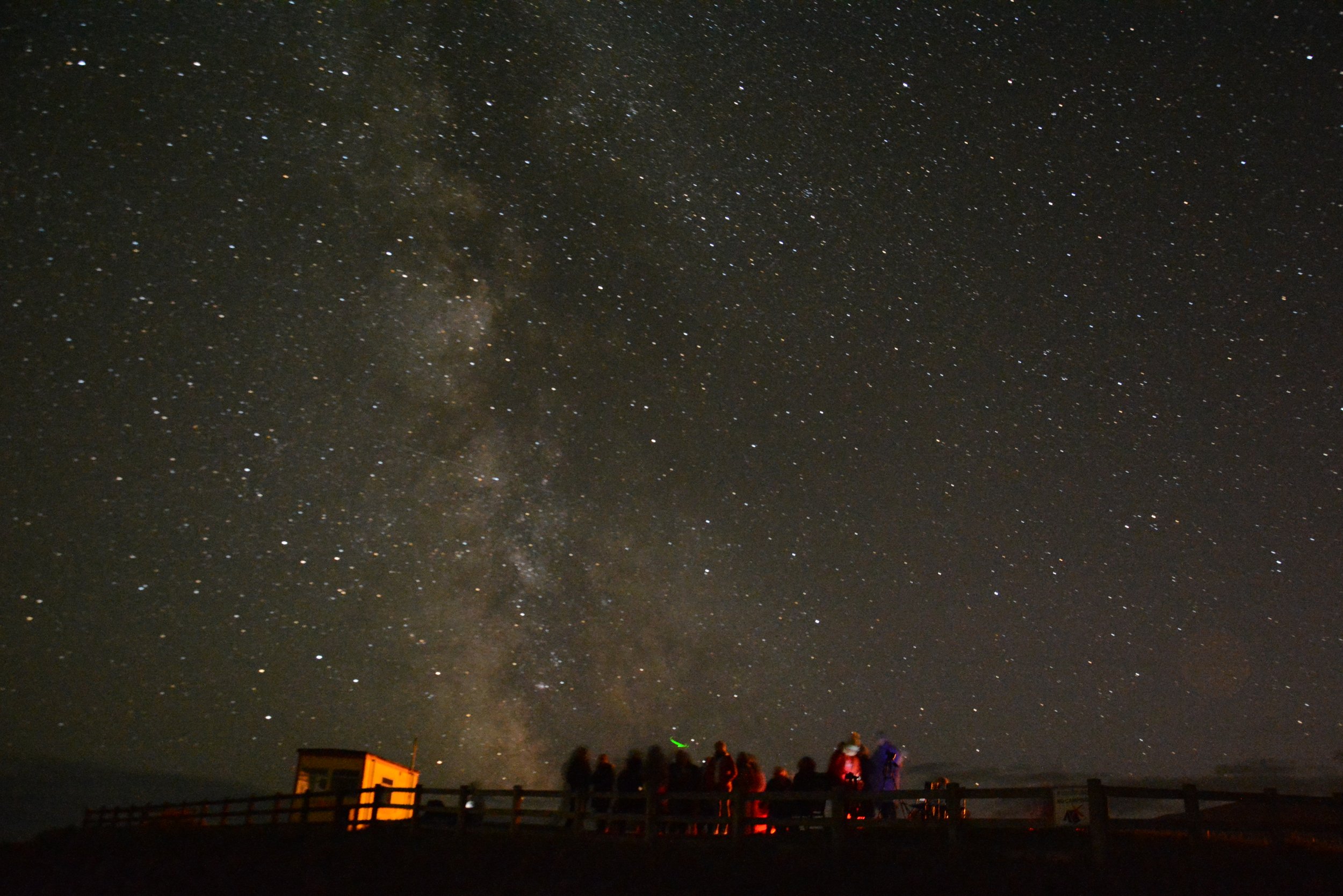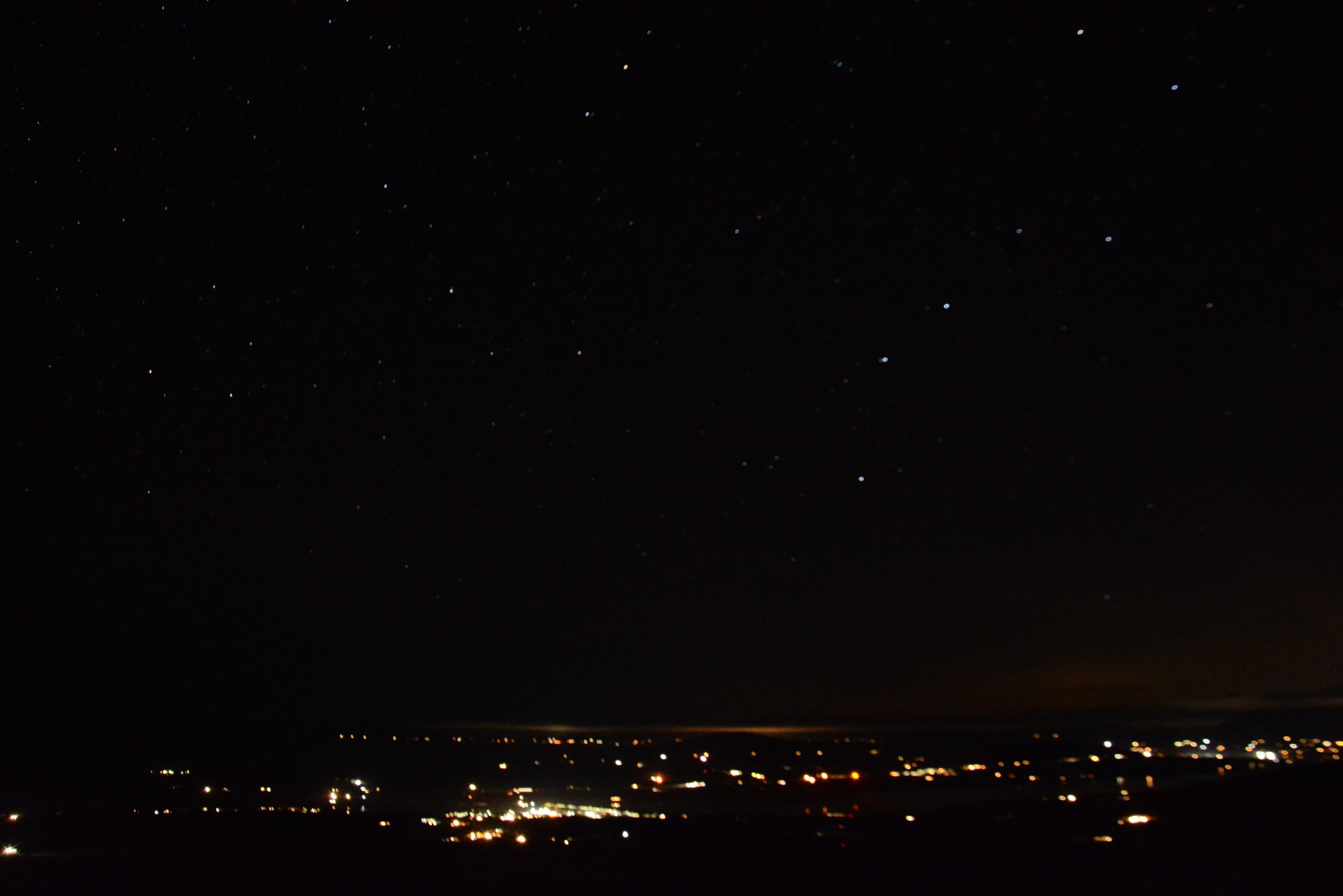The Importance of Darkness
The Iveragh Peninsula is home to the Kerry International Dark Sky Reserve. Very few people in the world get to see the wonders of the night sky the way we do. Many planets, constellations, and the Milky Way galaxy, are visible to the naked eye. But the darkness of the reserve isn’t just of benefit to stargazers. One of the other major advantages to having this reserve is that it provides a sanctuary for some of Iveragh’s most secretive animals – those that prefer to fly, feed, and find love when darkness falls.
A group of stargazers gathered under the milky way at Ballinskelligs.
Humans have very poor night vision, and we need the light of a full moon or artificial light to help us navigate after dark. Many species of animals, however, have excellent night vision or other senses which help them go about their lives when the sun has set. Before electricity, humans only had candles or fires by which to see. This gave rise to much of the folklore surrounding nocturnal animals, as there was often mystery around what made sounds or moved outside in the night. The screech of an owl or the cry of a vixen fox were eerie voices in the darkness and believed to be the calls of the spirit-like banshee. Many animals were said to be shapeshifters, altering from their animal form and human shape between day and night, often becoming witches or other malevolent characters. The Púca was believed to be a mischievous ghost that could take the form of a bat, horse or dog, while hares were said to be witches in disguise so they could steal milk from cows.
Many nocturnal animals remain hidden during daylight hours to avoid daytime predators and only emerge after dark. Due to this, they largely went unseen, and their mysterious lives were often explained through folklore. Bats feature prominently in stories and fables. Bats are briefly visible at dusk and dawn before darkness hides their flights. Where they spent their days was explained through tales of vampires and the underworld, much more imaginative than that they were simply tucked away, sound asleep in their roosts.
Stars visible behind Ballyhearney House, Valentia, as it is lit only with candlelight.
Some of the mystery of our nocturnal wildlife was unveiled with the arrival of electric lights. Our homes glowed brighter, our streets were lit – even in remote locations such as the islands, inland valleys, or mountains of Iveragh. In recent decades, the use of artificial light at night (also known as ALAN) has resulted in many areas being illuminated to the point where darkness is hard to find. Where the Milky Way was once a regular feature on a clear night, we are now lucky to see a handful of stars in some artificially lit outdoor settings.
While we may see the dark of the night as a time where humans are out of our comfort zone, nocturnal animals see it as an opportunity. Many animals have evolved to hunt or hide under the cover of darkness. Without this darkness, their life cycles can be negatively impacted. Bats feel unsafe flying in well-lit areas where they are vulnerable to being caught by cats or owls. Songbirds, such as robins, have been observed singing through the night in artificially lit areas. They do this to protect their territories, rather than resting to conserve their energy for daylight activities, and this extra activity has been found to shorten their lifespans.
The evidence and recognition of how ALAN can negatively impact our wildlife is now being shared. Dark Sky Reserves are encouraging local councils to switch the types of lighting used in outdoor settings from bright white-light to the more wildlife friendly yellow-lights. Other simple measures that can be taken include having security lights on a sensor or timer, rather than a constant light, and switching fittings so the light illuminate downwards rather than up into the sky. By working together, we can make sure that the dark of night is still a safe place for our nocturnal animals, and we can enjoy their presence along with the wonder of the stars above.
The plough visible above the lights of Portmagee village.
For more information on Dark Sky Reserves in Ireland, visit Dark Sky Ireland.



